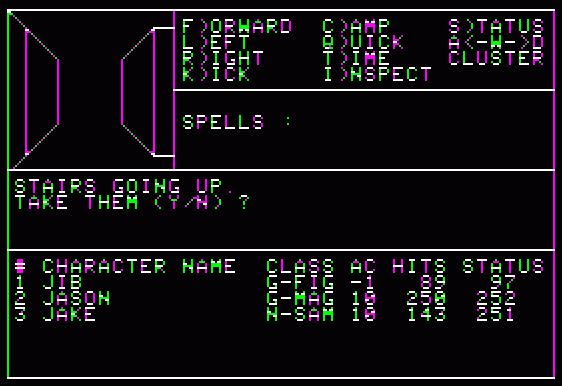
In @Play yesterday I mentioned a number of games that use Wizardry’s weird world metaphor. They’re sort of like roguelikes in that the world is divided into a grid of discrete spaces, but instead of viewing them from overhead, you are given a first-person view from the center of that space.
You don’t move with the same kind of smoothly-adjusting motion as Wolfenstein 3D would bring a while later, but movement instead jerks along one space at a time, and you turn in 90 degree increments. These games all disorient the player just enough that mapping them becomes important, but can be easily mapped on graph paper. Your more fiendish RPG dungeons of the type have tricks they play on you as you explore specifically to disorient you, like teleporting you to an identical-looking corridor without telling you, or spinning you around randomly. Wizardry and Bard’s Tale in particular delight in doing this.
It’s such a distinctive and immediately recognizable way to represent dungeon exploration that I’m surprised there isn’t a fan name for it, like “shmup” or “belt scroller.” I’ve calling them blobbers, but those actually get their name from the fact that, if you are commanding a party of characters, they’re all considered to inhabit that one space. The term doesn’t really apply to the mode of movement, only the atomicity of your group.
I gave a list of a good number of games that offer this kind of movement, but shortly after I thought of a bunch more, and they’re such a weird and varied bunch that I figured I’d take it as an excuse to catalogue as many examples as come to mind, and say some words about them in passing.
In the beginning there’s the Wizardry games, of course. I don’t actually know if it’s the first of the type, but it’s the earliest I can think of. Wizardry games using this format include, I believe, the first seven in the series; the 8th (and last in the core series) finally switched to a full 3D engine. There’s also some Japanese Wizardry games, and some of them use the style as well, but I can only personally vouch for one. That’s eight in total.
There’s some games that use Wizardry-style mazes as only a part of the experience. Some of the Ultima games do this. The Ultima predecessor Akalabeth uses them, and I know Ultima III does too for its dungeons. That’s two more.
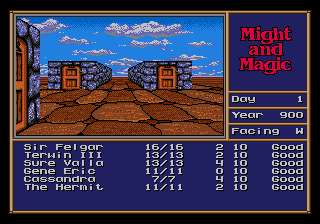
There’s two major series of Wizardly-inspired games. The original Bard’s Tale series were blobbers in the truest sense of the term. That’s four: I, II, III and Construction Set. The hugely underrated Might & Magic series also used them for both dungeons and their game worlds up to V. That’s nine more, for a running total of 19.
On the NES there are some surprising examples of the form. I already mentioned Interplay’s Swords & Serpents, a unique and probably doomed attempt to make a Bard’s Tale RPG on a ROM-based system. There’s multiple oodles (boodles! froodles! zoodles! poodles!) of interesting things about that game, like its character-specific password system and its four-player support, but we don’t have the time here to get into that. In fact, I could say that about nearly this entire list.
Two of the most ridiculous kinds of characters to explore 1st-person dungeons are a super spy (as in Golgo 13: Top Secret Episode) and lightbulb-tonguing uncle to a weird and macabre family (as in Fester’s Quest), both also on NES. Adding them to the pile brings us up to 22.
I mentioned Phantasy Star on Sega Master System and Arcana on SNES. There’s also Shining in the Darkness on Genesis and Double Dungeons on the TG16. There’s at least one Madou Monogatari game that uses the system, but I’m only adding games that I can remember without Googling or looking anything up, so I’m only counting it once. We’re now at 27.
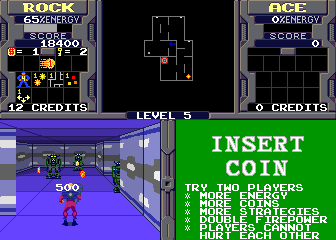
There’s 3D Bomberman on the MSX, an early experiment in the Bomberman series where the mazes you’re in are 3D. In the arcade there’s Ed Logg’s Xybots, which was intended to be a Gauntlet sequel but the play ended up being different enough that he changed it to a sci-fi game. Xybots breaks the rules slightly because your character is visible, but it’s still that kind of grid-based, first-person maze. More recently there’s, hm… at least five Etrian Odyssey games? That brings the count up to 34.
Some more miscellaneous RPGs I mentioned last time: Dragon Wars, Eye of the Beholder, and Dungeon Hack. I particularly like Dragon Wars and Dungeon Hack, although for completely different reasons.
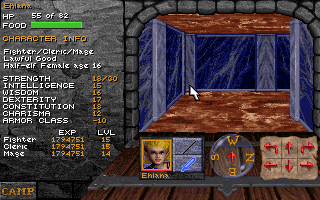
Oh! Let’s not forget about the D&D Gold Box series, which use 1st person grid mazes for dungeon exploration. That includes Pool of Radiance, Curse of the Azure Bonds, Secret of the Silver Blades, Pools of Darkness, Champions of Krynn, Death Knights of Krynn, Unlimited Adventures, and the Buck Rodgers game made in that style. There are other computer D&D games from the time, but they didn’t use that engine. These games also had other modes of exploration, and overhead-view combat, so they aren’t as tied to the format.
Finally there are some other miscellaneous games. Blobber-style mazes were a low-resource way of immersing the player in a labyrinth, even if there was nothing else in there of interest. My first exposure to the field was a C64 BASIC game called, natch, Labyrinth. I remember seeing a shareware DOS game called 3-Demon. The game that Strong Bad poked around in the Friendlyware video I linked last time is Killer Maze, and definitely fits the discretely granular bill.
So, all in all that’s 48 games completely from memory! But I’m sure there’s more; can you think of any others?
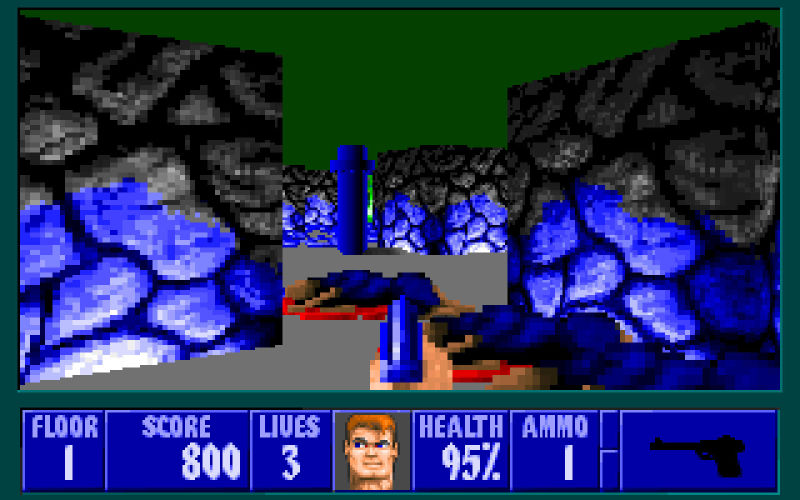
When Wolfenstein 3D came out this entire style of world presentation immediately fell out of favor. Wolf 3D has very much that same kind of grid-based world, but no longer is your position locked to the center of each space. You can turn in angles of less than 90 degrees, and there’s more of a real-time immediacy to the game that’s a lot more engaging.
Wolf 3D pretty easily destroyed this genre. Almost no blobber mazes show up from that point on except for some edge cases that are explicitly calling back to the old style, like the later Japanese Wizardry games and Etrian Odyssey. It is interesting that, once computers became powerful enough to render worlds in a more fluid and immediate kind of way, it made these kinds of distinctive presentation shortcuts irrelevant. It’s kind of saddening.
EDIT: One I had intended to include but somehow left out is Dungeon Master, which xot reminded me of in comments!

